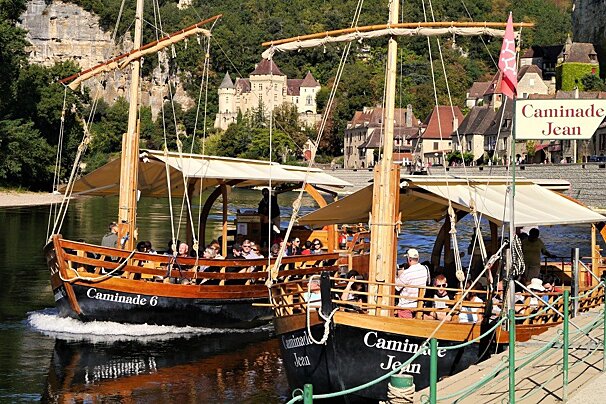
Traditional Barge Boat Trip, La Roque-Gageac
Travel along the valley of the five chateaux on traditional barges and discover some of the most beautiful sites.

© La Chartreuse Hotel, Cahors
Peaceful retreat with views over the River Lot
Just a 5 minute walk to the centre of Cahors and with stunning views of the river and countryside, this is an ideal spot from which to explore. The hotel features a large outdoor pool and restaurant, along with 50 bedrooms which were recently refurbished in 2011.
The bedrooms are comfortable and modern and have a number of modern conveniences to make you feel at home. You can select anything from a single occupancy with a countryside view to a family room with a view of the river.
Seminars, events, meetings or parties can all be accommodated and the hotel management will gladly help you with your arrangements and aim to fulfil any requests you may have. There are 2 well equipped seminar rooms and theatre at your disposal.
A spacious pool in the hotels courtyard is a wonderful place to kick back and relax on a sun lounger or in the shade under a parasol.
A meal can be enjoyed in the spacious elegant dining room or out on the terrace next to the river, where you can take in the flourishing surroundings while savouring a cold glass of wine. The cuisine is typical of the region, where French dishes make the most of the fantastic local produce.
All children are welcome and those under 2 may stay for free when using an existing bed or cot.

Travel along the valley of the five chateaux on traditional barges and discover some of the most beautiful sites.
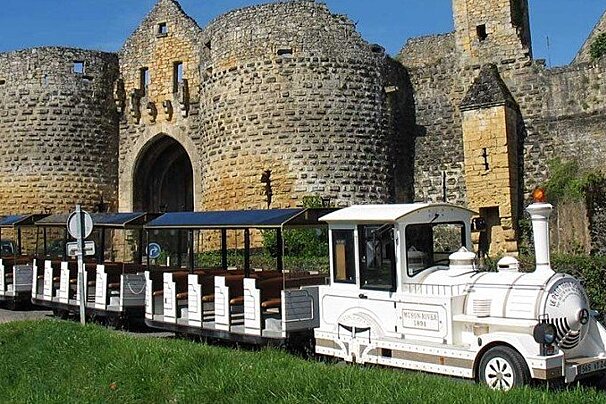
A trip on a petit train is the perfect way to see this small bastide town and to learn a little more about the long history of the bastide town.

Open from June to the end of September this small waterpark offers you and your family the chance to cool off on the hot summer days and to keep children entertained for hours.

This park recreates life in prehistoric times.

After discovering the city of Saint Emilion this train tour takes you out into the countryside and surrounding vineyards to discover more about the history and culture of wine in this region.

A delightful trip along the river that runs through the heart of Bergerac on a traditional wooden barge.
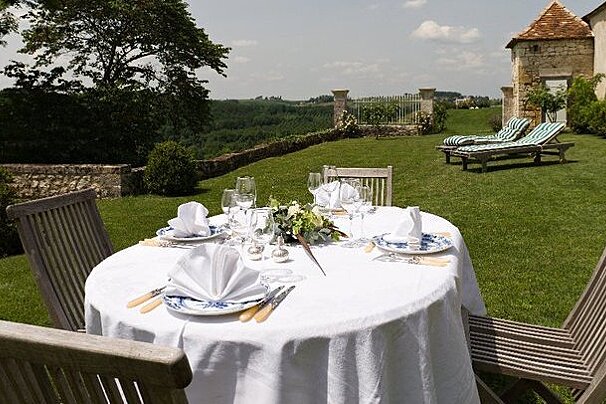
The dining rooms allow for views of the surrounding vineyards and rolling hills. Drinks can also be enjoyed in the small library or among the chestnut trees.

This elegant and sophisticated two Michelin star restaurant offers creative dishes designed by chef Cédric Béchade, who plays with colours and textures in his cuisine.

Perched on a cliff, the Hôtel l'Esplanade has a great setting with good rooms and more importantly, a fantastic restaurant.
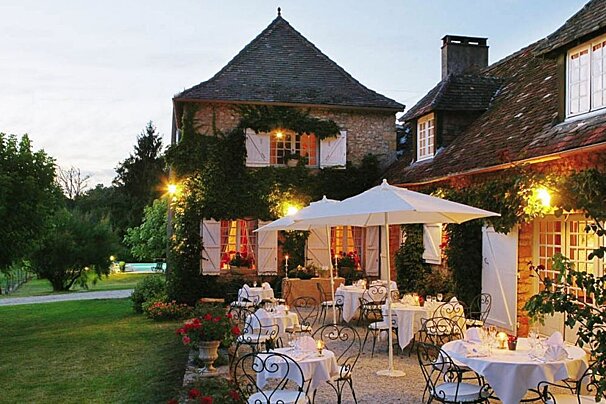
Set in the hotel's 19th Century building, the dining room has wonderful stone walls and comforting, traditional table settings. Weather permitting, you may be able to relish your meal outside on the flowery terrace overlooking the lush garden or even down by the pool.
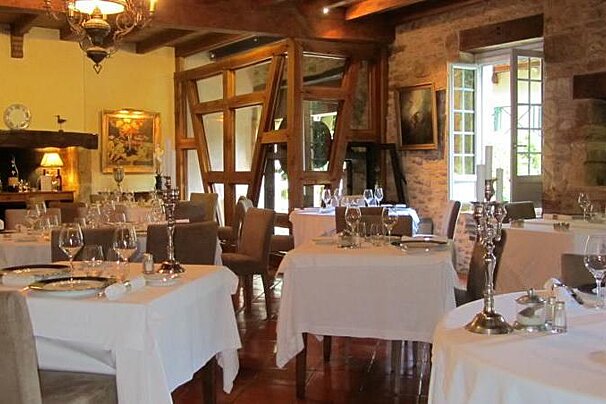
A bright restaurant with stone walls, old wooden beams, fireplace and inviting allure, offer up culinary delights from the region. A strong focus is on local local treats and seasonality.
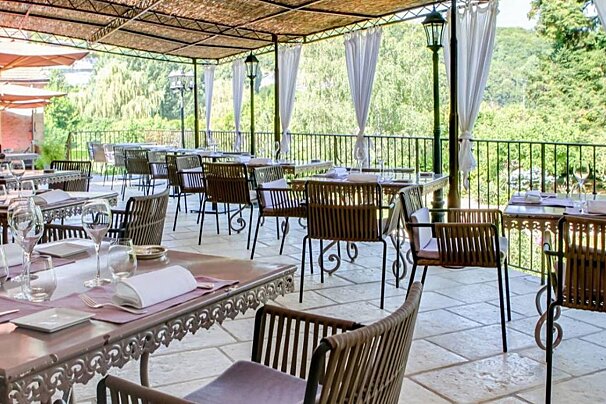
With their very own garden, the restaurant has access to the freshest fruit, vegetables, edible flowers and herbs. This is reflected in the menu, which makes the most of the regions famous culinary delights, including foie gras and of course Perigords black diamond, the truffle. You will easily settle into the cosy, contemporary restaurant or get to enjoy your surroundings while dining out on the terrace.

The cathedral in Cahors dates to the 11th century though it has undergone modifications over the centuries.

Developed by an engineer called Frédéric Suisse the system uses the amazing power of the river to pump water from the fountain of the Chartreux, thus supplying Cahors with drinking water.

Built in the 14th century, the Valentré bridge is synonymous with the town of Cahors.

Spread over three levels this museums tells many stories of resistance efforts, concentration camps and the part the Cahors played in the liberation of France.
This fossil museum in Luzech houses tracks and footprints of dinosaurs from the Jurassic period of over 140 million years ago which were discovered in Crayssac. Thought to be Diplodocus-like quadrupeds, the tracks are over 10 metres long.
This huge cave , more than two kilometres long, has seven large halls open to the public. Its lower prehistoric chambers were discovered by teenagers in the 1920s. They contain prehistoric paintings and sketches, human footprints and limestone rock formations which include cave pearls. The huge Chapelle des Mammoths is the first stop, which contains impressive art that uses the contours of the rock perfectly. There are literally hundreds of drawings. The museum is good, displaying a diverse collection of artefacts.

Formerly the capital of the old province of Quercy, Cahors is the largest town in the Lot valley. The site was inhabited by the Cadurci tribe in Roman-Gaul times.

Perched on the side of a cliff, in a gorge above the river Alzou, this medieval town has a breathtaking setting.
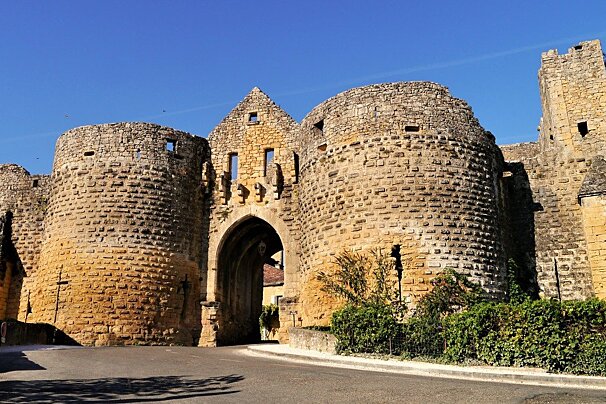
This bastide town, sitting high above the Dordogne river, has an impressive number of its 13th century fortifications still intact, including three of its original gates.

The main town of the area between 1800 and 1926, it was all but destroyed during the floods of 1930, which caused devastation across the entire south west of France and counted as a 100 year flood.
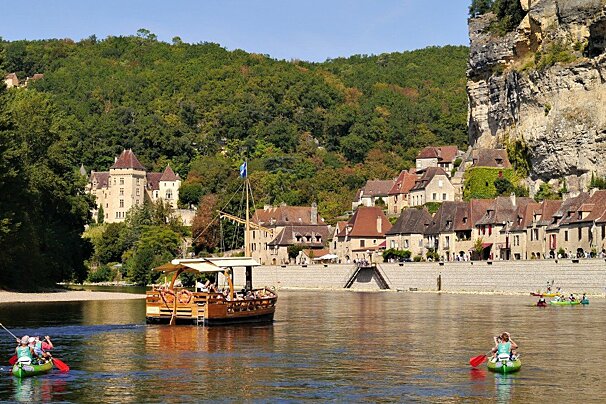
It's hard to imagine a nicer village than La Roque-Gageac, with its huge limestone cliffs that tower behind the Renaissance-style houses built in creamy stone with burnt red roofs.
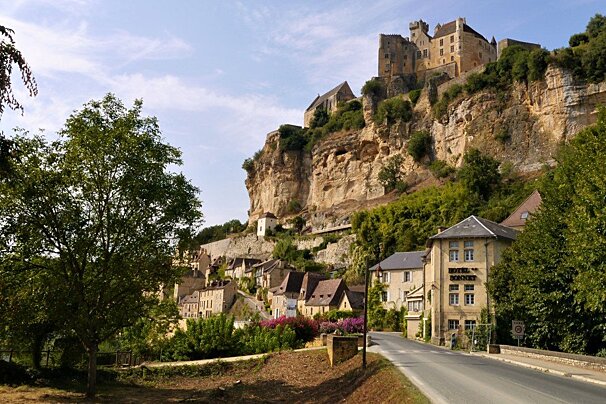
The village of Beynac-et-Cazenac is thought to date back to the 12th century when its imposing cliff top château was constructed.